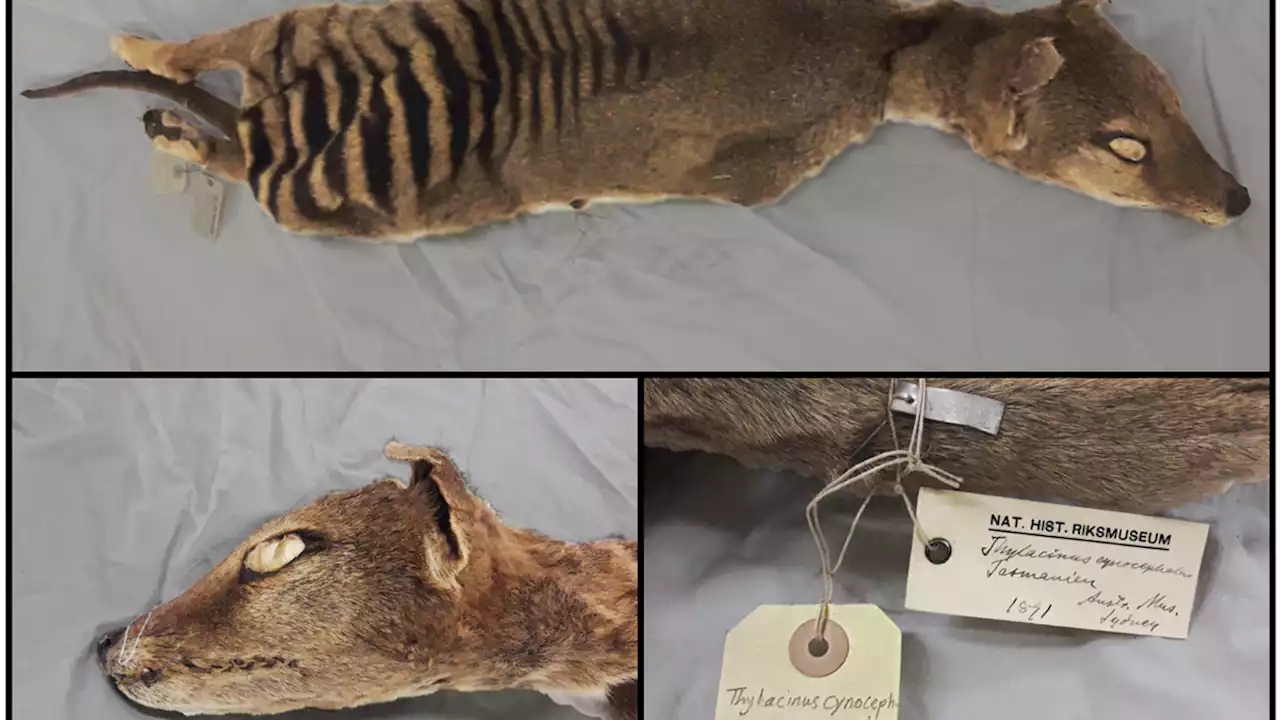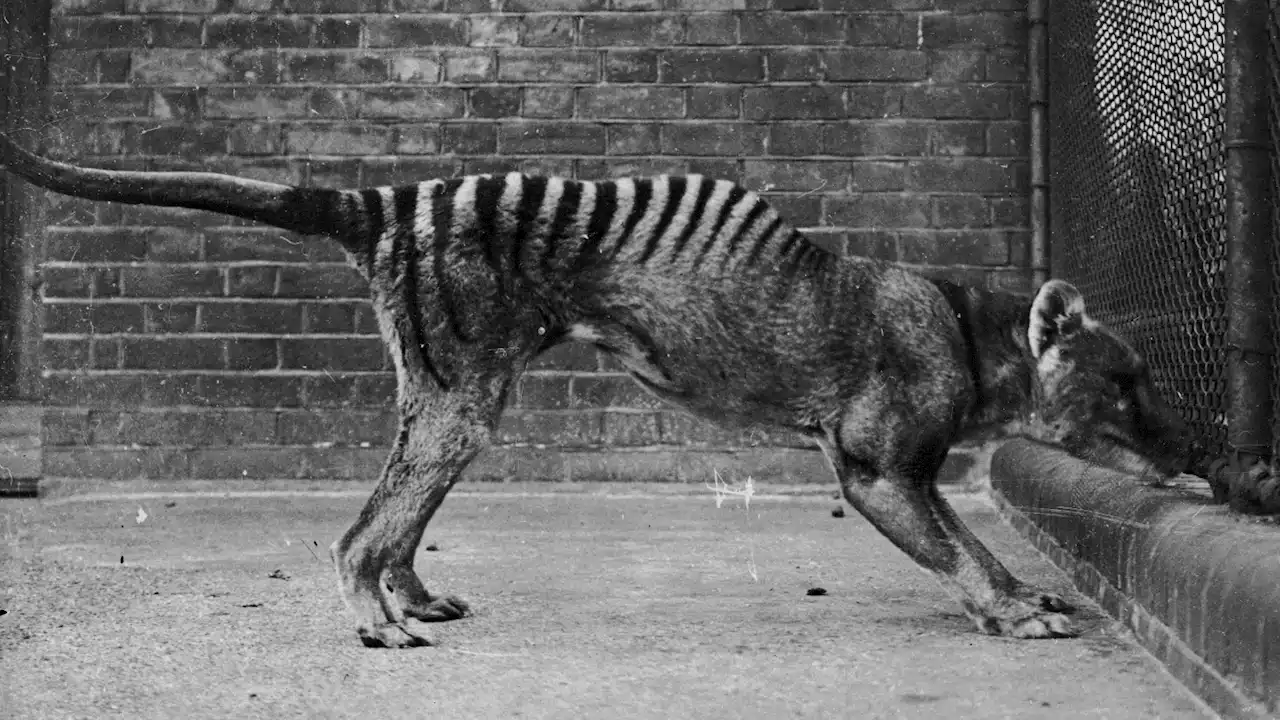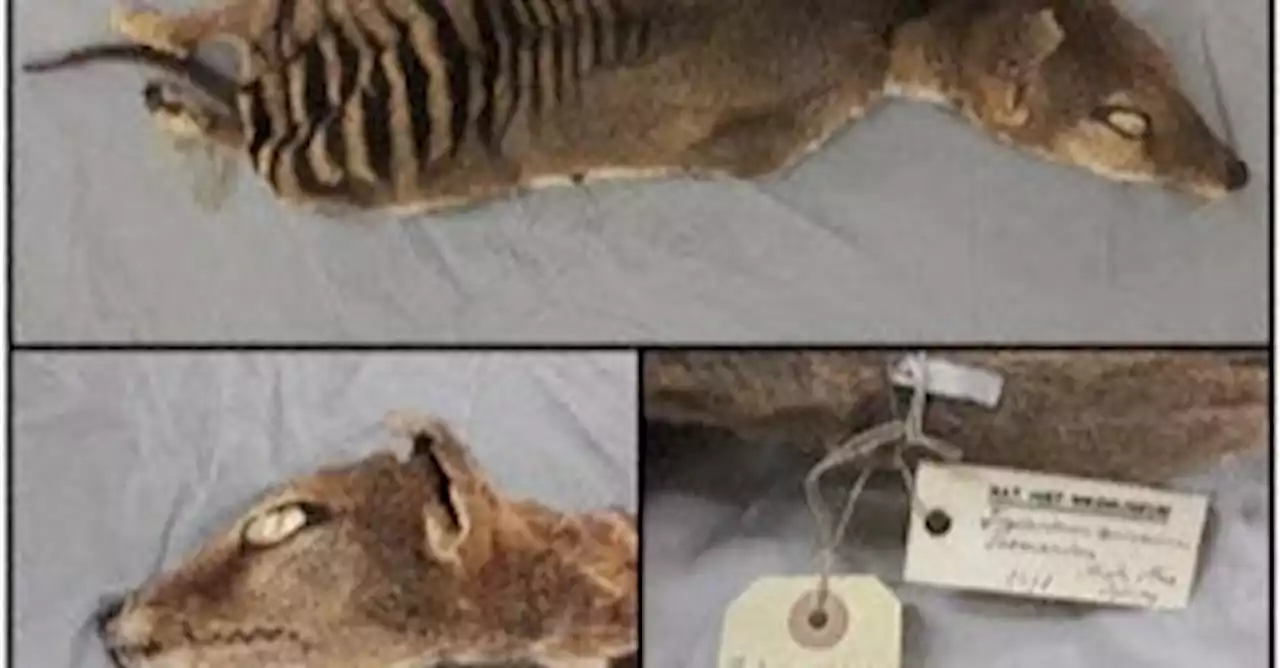The Tasmanian tiger, a dog-sized striped carnivorous marsupial also called the thylacine, once roamed the Australian continent and adjacent islands, an apex predator that hunted kangaroos and other prey. Because of humans, the species is now extinct.
. But this study marked the first time that RNA - much less stable than DNA - has been recovered from an extinct species.
"RNA sequencing gives you a taste of the real biology and metabolism regulation that was happening in the cells and tissues of the Tasmanian tigers before they went extinct," said geneticist and bioinformatician Emilio Mármol Sánchez of the Centre for Palaeogenetics and SciLifeLab in Sweden, lead author of the study published in the journal"If we want to understand extinct species, we need to understand what gene complements they have and also what the genes were doing...
"Most researchers have thought that RNA would only survive for a very short time - like days or weeks - at room temperature. This is likely true when samples are wet or moist, but apparently not the case when they are dried," said evolutionary geneticist Love Dalén of the Centre for Palaeogenetics.
Brasil Últimas Notícias, Brasil Manchetes
Similar News:Você também pode ler notícias semelhantes a esta que coletamos de outras fontes de notícias.
 Extinct Tasmanian tiger yields RNA secrets that could aid resurrectionRNA, which regulates the activity of DNA, is a crucial part of building an organism - and now researchers have extracted some from an extinct animal for the first time
Extinct Tasmanian tiger yields RNA secrets that could aid resurrectionRNA, which regulates the activity of DNA, is a crucial part of building an organism - and now researchers have extracted some from an extinct animal for the first time
Consulte Mais informação »
 RNA for the first time recovered from an extinct speciesA new study shows the isolation and sequencing of more than a century-old RNA molecules from a Tasmanian tiger specimen preserved at room temperature in a museum collection. This resulted in the reconstruction of skin and skeletal muscle transcriptomes from an extinct species for the first time. The researchers note that their findings have relevant implications for international efforts to resurrect extinct species, including both the Tasmanian tiger and the woolly mammoth, as well as for studying pandemic RNA viruses.
RNA for the first time recovered from an extinct speciesA new study shows the isolation and sequencing of more than a century-old RNA molecules from a Tasmanian tiger specimen preserved at room temperature in a museum collection. This resulted in the reconstruction of skin and skeletal muscle transcriptomes from an extinct species for the first time. The researchers note that their findings have relevant implications for international efforts to resurrect extinct species, including both the Tasmanian tiger and the woolly mammoth, as well as for studying pandemic RNA viruses.
Consulte Mais informação »
 RNA has been recovered from an extinct species for the first timeA new study shows the isolation and sequencing of more than a century-old RNA molecules from a Tasmanian tiger specimen preserved at room temperature in a museum collection. This resulted in the reconstruction of skin and skeletal muscle transcriptomes from an extinct species for the first time.
RNA has been recovered from an extinct species for the first timeA new study shows the isolation and sequencing of more than a century-old RNA molecules from a Tasmanian tiger specimen preserved at room temperature in a museum collection. This resulted in the reconstruction of skin and skeletal muscle transcriptomes from an extinct species for the first time.
Consulte Mais informação »
 Scientists recover RNA from an extinct species for the first timeA team of researchers managed to isolate and sequence century-old RNA from the thylacine, also known as the Tasmanian tiger.
Scientists recover RNA from an extinct species for the first timeA team of researchers managed to isolate and sequence century-old RNA from the thylacine, also known as the Tasmanian tiger.
Consulte Mais informação »
 Scientists recover RNA from an extinct species for the first timeGeneticists have for the first time isolated and decoded RNA molecules from a creature that died out long ago.
Scientists recover RNA from an extinct species for the first timeGeneticists have for the first time isolated and decoded RNA molecules from a creature that died out long ago.
Consulte Mais informação »
 For the first time, researchers decoded the RNA of an extinct animalThe Tasmanian tiger, or thylacine, was hunted nearly to extinction. Now RNA extracted from a museum specimen reveals how its cells functioned.
For the first time, researchers decoded the RNA of an extinct animalThe Tasmanian tiger, or thylacine, was hunted nearly to extinction. Now RNA extracted from a museum specimen reveals how its cells functioned.
Consulte Mais informação »
